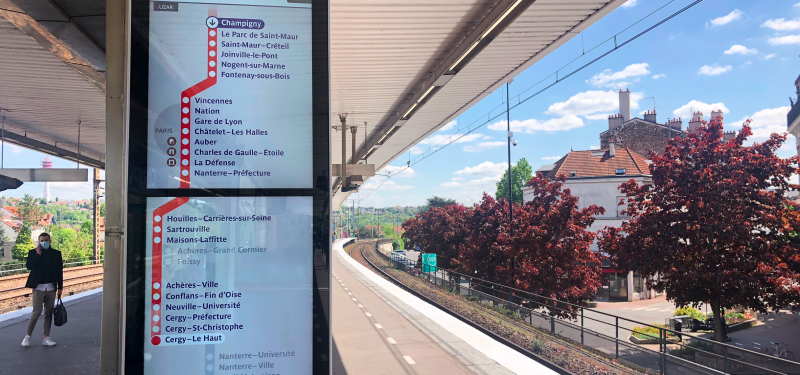In short
Knowing how to find your way around the metro is good, being able to continue your journey on the streets is better! This is the purpose of this large touchscreen interface, which is available to tourists in around sixty of the busiest stations. It’s aim is to help them to find their way around the transport system and the streets around the stations.
- 97% customer satisfaction according to BVA

Challenges
The project is intended to be a fun and informative extension of the famous - but unfortunately somewhat obsolete - PILI, a map of the network which, with the help of small incandescent bulbs corresponding to each station, traced the traveller's route on leaving the station. A delightful experience that management wanted to recreate on a large touch screen. We needed to provide a passenger information interface with advanced functionalities that would be easy to use for different users (occasional users, tourists, people with reduced mobility (PRM), etc.).

Steps
- 1Inspiration and user research
- 2Creating ideas and choosing the main axes
- 3Research of graphic universe
- 4Wireframes and UI
- 5User testing
- 6Pixel-perfect screens
- 7Development monitoring
- 8Large-scale testing












